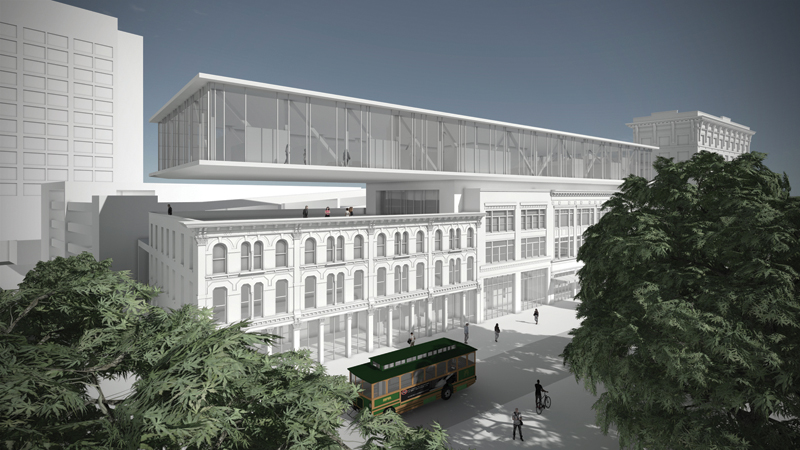HiWorks: San Antonio
When Brantley Hightower, AIA, was in the second grade he was told to dress up like what he wanted to be when he grew up. He borrowed his dad’s briefcase, put on a suit and tie, and went to school as an architect. “It’s been a pretty linear shot from there,” Hightower says. “Architecture is something that’s both artistic and technical. Both of those appealed to me.”
Hightower went to The University of Texas at Austin for a dual degree in architecture and liberal arts. He moved to Chicago and worked for Perkins+Will for two years, spending most of that time assigned to K-12 schools. While in Chi, he “drank the Frank Lloyd Wright Kool-Aid” and gave tours of the Robie House. Back in Texas, he worked for Max Levy Architect in Dallas then Lake|Flato in San Antonio for a time before going back to graduate school at Princeton. With an M.Arch degree and most of his friends heading off to teach in the Northeast, Hightower returned to his then-girlfriend, now wife, Clara Hightower, AIA, in San Antonio and his job at Lake|Flato. “Lake|Flato is a great place to work,” Hightower says. “It’s full of great people. It’s very comfortable and a little cult-like — but in a good way.”
Hightower left Lake|Flato in 2012 and founded HiWorks. “I wanted a firm that was more than just about me,” he says, “that was about doing good in the world and having higher aspirations of what architecture can be. It’s nice to do buildings for wealthy people, but I needed something more nourishing.”
Thus far, HiWorks (which is composed of Hightower and part-time associate Betsy Johnson, AIA) has picked up work from random connections, often from the leavings of other architects. It has led to a diverse body of work — everything from a ranch dining pavilion to a public art project on an air traffic control tower. Hightower, who has also taught at various universities, approaches each project with an appreciation of its difference and doesn’t attempt to fit his work into a grander narrative. He appreciates the flexibility of running his own firm, which has given him the freedom to be an active parent to his two daughters. And while being a small practice presents certain limitations, he has found workarounds. “Because I’m small, I follow the model of a jazz combo,” he says. “I’m one player, but will partner with others for a particular gig.”

Stinson Municipal Aircraft Control Tower
HiWorks collaborated with Work5hop to win a local design competition to turn a new air traffic control tower designed by AJT Engineering into a civic icon. The design references the history of Stinson Field as a training site for World War I pilots and the home of the first woman-operated flying school in the nation with an invocation of early-20th-century aviation. Fabric-clad wing forms attach to the tower structure with a steel armature. During the day, they read as abstract interpretations of biplane wings. At night, they glow with internal LED illumination.

Fort Stockton Community Theatre
Fort Stockton is a town of 8,000 people located off I-10, west of the Pecos River. In spite of its small size, the town has an active community theater that for years has performed in a repurposed brick commercial building. HiWorks assisted the group in identifying their functional needs and developed a concept for how those needs could be addressed architecturally. The architects developed a design that reused the existing structure while creating a new identity for the theater that references the existing downtown cityscape as well as the surrounding desert plateau landscape.

Alamo Museum
After witnessing the less-than-enthusiastic response to the Alamo Comprehensive Interpretive Plan, HiWorks developed a hypothetical proposal for an Alamo Museum that grew out of ideas first presented by students in a design studio that Hightower taught at Trinity University in 2013 with Margaret Sledge, AIA. Rather than demolish three historic structures at the western edge of Alamo Plaza to construct a new building, HiWorks proposed a surgical adaptive reuse. Non-historic portions of the ground floor interiors would be gutted, opening up space to reconstruct portions of the Alamo’s original western wall, while additional exhibition space would be housed in a modern volume cantilevered above the historic structures.

Aaron Seward is managing editor at Perkins&Will and a former editor of this magazine. He lives in Austin.



